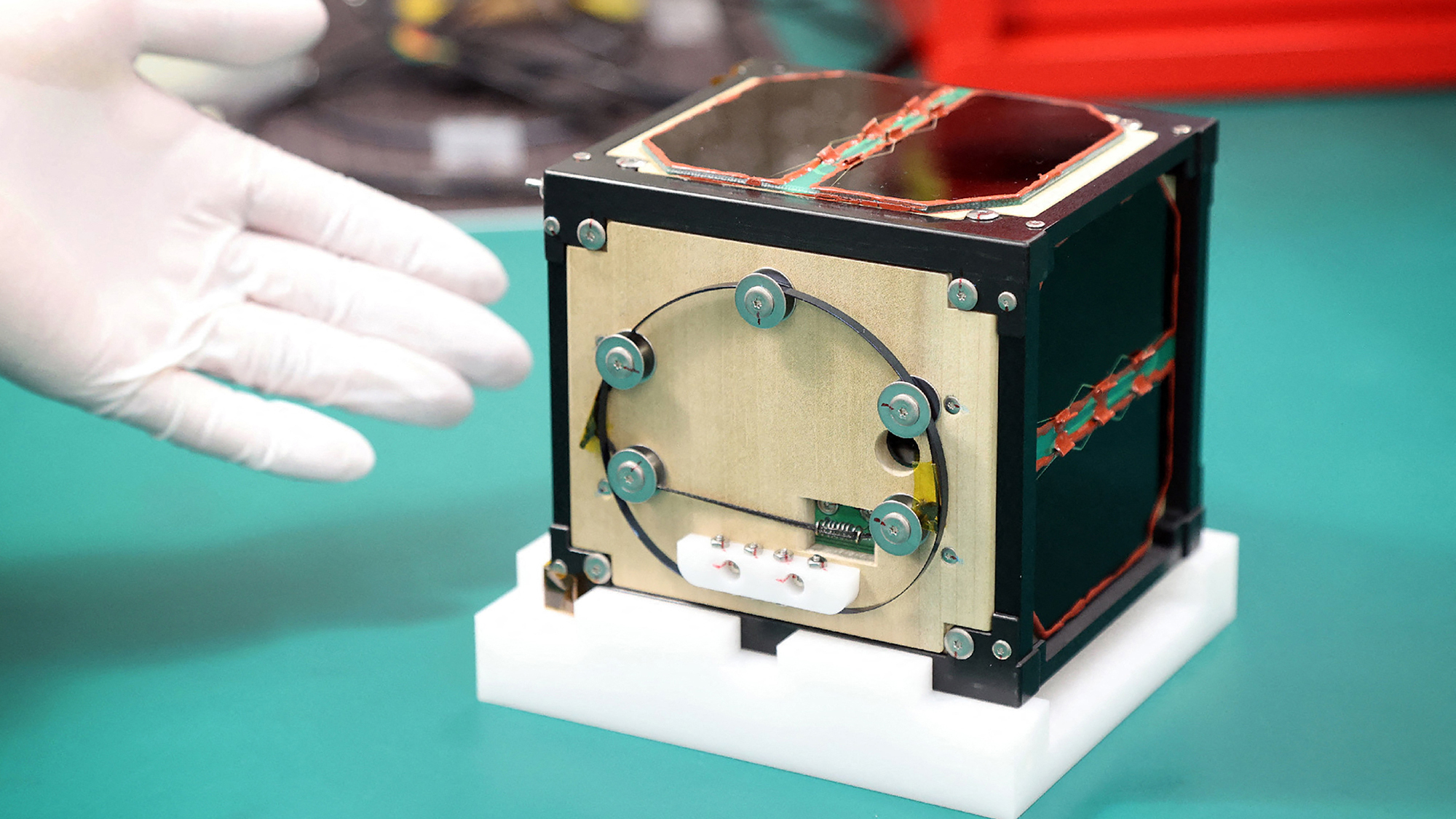

We may earn revenue from the products available on this page and participate in affiliate programs. Learn more ›
A SpaceX Dragon capsule docked at the International Space Station at 9:52 AM EST on November 5th carrying over 6,000 lbs of cargo along with one small, unique prototype. On Tuesday, the company’s 31st resupply mission for NASA delivered the world’s first satellite built using wooden parts. More specifically, LignoSat is made with honoki, a magnolia tree native to Japan whose wood was historically used to craft samurai sword sheaths.

The origins of LignoSat (named after the Latin word for wood, “lignum”) date back to 2017, and come from former NASA astronaut and engineer, Takao Doi. At the time, Doi wondered if future human explorers on the moon and Mars could one day turn to materials other than steel and concrete to construct safe, resilient buildings. Speaking to The New York Times on Tuesday, Doi’s collaborator explained how history’s earliest, wooden airplanes soon served as jumping off point.
“…[W]hy not make a satellite with wood, too?” asked Koji Murata, a Kyoto University professor of forest and biomaterials science.
After partnering with one of Japan’s oldest timber companies, Sumitomo Forestry, Doi and Murata’s team arranged to send three wood samples to the ISS in 2022. Blocks of magnolia, cherry, and birch were then subjected to the extreme solar radiation, cosmic rays, and the harsh temperatures of outer space for nearly eight months. Even after the barrage of stress tests, the wood samples displayed no major signs of damage or deterioration. According to a Kyoto University rundown earlier this year, the honoki magnolia ultimately won out in the end due to its comparative light weight and crack resistance.

With the exact wood selected, engineers asked a team of artisans trained in “sashimono” for help. The traditional Japanese woodworking process dates back centuries, and relies on precise joint designs instead of nails, glue, screws, or welding to build structures and furniture. In this case, however, sashimono experts utilized their methods to construct large portions of LignoSat’s outer casing.
[Related: NASA warns SpaceX over safety issues after astronaut hospitalization.]
Now aboard the ISS, NASA and the Japan Aerospace Exploration Agency (JAXA) plan to deploy the LignoSat in December for a six month orbital trial. As it circles Earth, engineers will monitor factors like wood deformation, as well as assess how the material does or does not affect onboard sensors monitoring the geomagnetic field. As CNN notes, LignoSat will be put through the wringer during that time, withstanding temperature fluctuations ranging between -100 and 100 degrees Celsius (-148-212 degrees Fahrenheit) roughly every 45 minutes as it orbits the planet. Once its mission is complete, LignoSat will safely burn up upon reentering the Earth’s atmosphere.
Although this is just the first step towards incorporating natural wood into space exploration, LignoSat’s potential success could also preview a future that includes far more sustainable materials in satellites. The NY Times explains that since current orbital equipment is built with metal, their fiery de-orbits frequently release harmful, ozone-damaging emissions like aluminum oxide into the atmosphere. Replacing many of those components with wood such as honoki could greatly reduce their environmental impact—an increasing concern as the skies continue to fill with satellites.
